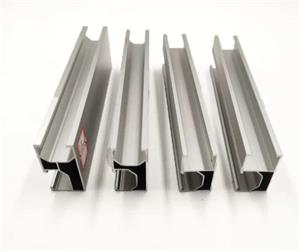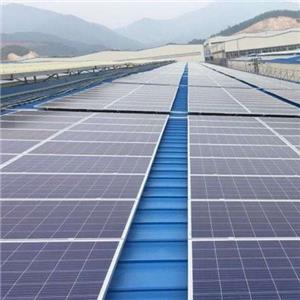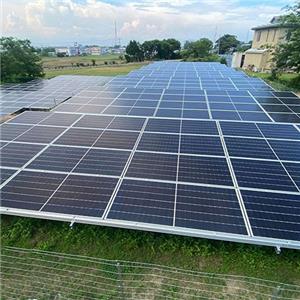Solar Ground Mount Systems: Types, Benefits, and Best Applications
Solar Ground Mount Systems: Types, Benefits, and Best Applications
The "solar ground support system" refers to the structural framework used to mount solar panels on the ground. These systems come in various styles, each designed for different applications, terrains, and efficiency requirements. Below, we detail the main types and their advantages.
1. Fixed-Tilt Ground Mount Systems
Description: These systems hold solar panels at a fixed angle, optimized for the latitude of the installation site.
Advantages:
Cost-effective (simpler design, fewer moving parts).
Low maintenance (no moving components to wear out).
"Durable "in harsh weather conditions.
"Ideal for large-scale solar farms"where consistent angle suffices.
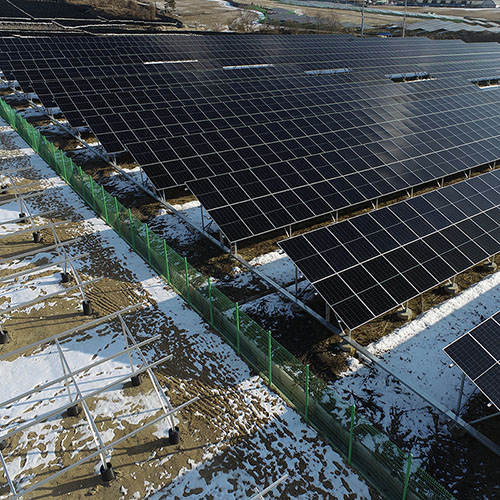
2. Seasonal-Adjustable Tilt Systems
Description: Allows manual adjustment of panel angles a few times a year to optimize for seasonal sun variations.
Advantages:
"Better energy capture"than fixed-tilt (5-15% more efficiency).
"Still relatively low-cost"compared to tracking systems.
"Flexibility"to adapt to changing sun positions.
3. Single-Axis Tracking Systems
Description: Panels rotate on one axis (usually east-west) to follow the sun’s daily movement.
Advantages:
"20-30% higher energy output" vs. fixed-tilt.
"Good for large commercial/utility installations".
"More efficient land use" (higher energy density per acre).
4. Dual-Axis Tracking Systems
Description: Panels move on two axes (east-west & north-south) to follow the sun’s daily and seasonal path.
Advantages:
"Up to 40% more energy"than fixed-tilt.
"Optimal for high-latitude locations" with significant seasonal sun angle changes.
"Best for small, high-efficiency installations" (e.g., research facilities).
5. Pole-Mounted Systems
Description: Solar panels are mounted on poles, often with tracking capabilities.
Advantages:
"Space-efficient" (good for uneven or rocky terrain).
"Elevated design"reduces shading from vegetation.
"Can incorporate tracking" for better efficiency.
6. Ballasted (Non-Penetrating) Ground Mounts
Description:Uses weighted bases (concrete or steel) instead of deep foundations, ideal for flat or sensitive terrains.
Advantages:
"No ground penetration" (good for landfills, rooftops, or protected soil).
"Quick installation" (no digging or concrete curing needed).
"Easily relocated" if needed.
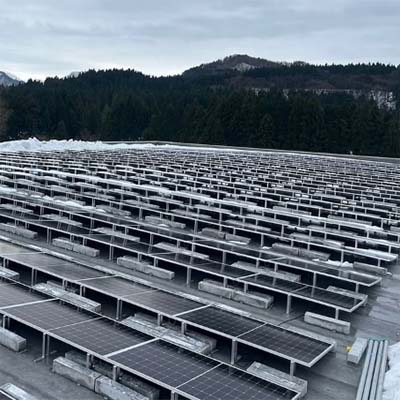
Advantages of Ground-Mounted Solar Systems (General)
1. "Higher Efficiency" – Better airflow keeps panels cooler than rooftop systems.
2. "Optimal Orientation" – Can be positioned for maximum sun exposure.
3. "Scalability" – Easier to expand than rooftop systems.
4. "Easier Maintenance" – No roof access needed; cleaning and repairs are simpler.
5. "No Roof Constraints" – Avoids shading, structural limitations, or roof damage risks.
6. "Better for Large-Scale Projects"– Ideal for solar farms and utility installations.
Conclusion
The best ground support system depends on factors like budget, location, energy needs, and land availability. Fixed-tilt is the most economical, while tracking systems maximize energy production. Ballasted systems are great for sensitive sites, and pole mounts work well in uneven terrain.
Would you like recommendations for a specific use case?

